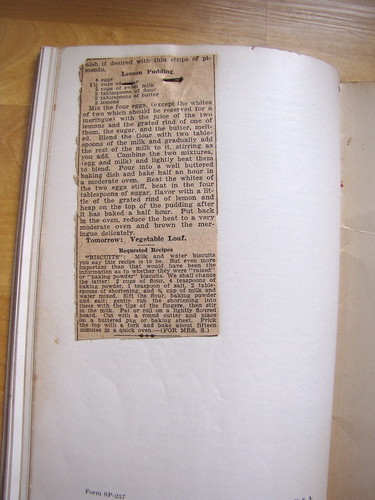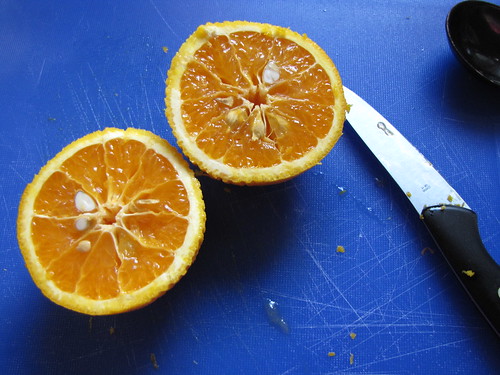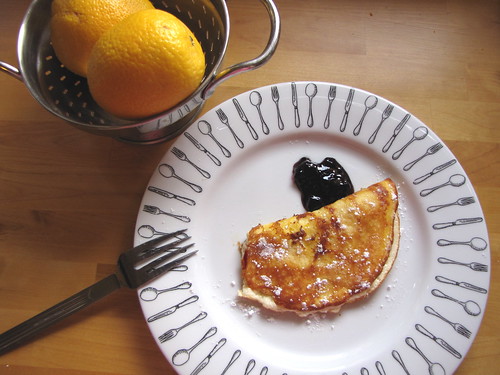Found in the back of a 1930 cookbook
This clipping was pinned in the back of my 1930 Silent Hostess Treasure Book cookbook.
Lemon Pudding
4 eggs
1 1/2 cups of sugar
2 cups of sweet milk
2 tablespoons of flour
2 tablespoons of butter
2 lemonsMix the four eggs, (except the whites of two which should be reserved for a meringue) with the juice of the two lemons and the grated rind of one of them, the sugar, and the butter, melted. Blend the flour with two tablespoons of the milk and gradually add the rest of the milk to it, stirring as you add. Combine the two mixtures, (egg and milk) and lightly beat them to blend. Pour into a well buttered baking dish and bake half an hour in a moderate oven. Beat the whites of the two eggs stuff, beat in the four tablespoons of sugar, flavor with a little of the grated rind of lemon and heap on the top of the pudding after it has baked a half hour. Put back in the oven, reduce the heat to a very moderate oven and brown the meringue delicately.
Tomorrow: Vegetable Loaf.
The clipping is undated, and there is no indication as to the source, but the references to a “moderate” and “very moderate” oven (and to a “quick oven” in the recipe that follows) mark it as being relatively old. A moderate oven is about 350 degrees F. Very moderate is probably about 325 (most conversion scales don’t list “very moderate”, but the recipe does say to “reduce the heat”). A quick oven is about 375-400 degrees. You can find a conversion chart for these old-fashioned temperatures (and measurements) here.
A baked pudding with meringue isn’t entirely unheard of these days (particularly as a pie filling), but I bet most folks who make pudding at home make it from a box. Which is an entirely different sort of pudding from this one. (And, hopefully, a different sort from the pudding discussed in “Poisoned By a Lemon Pudding: Narrow Escape of a Family of Six at Westwood, O.“, an 1890 article in the Chicago Daily Tribune. Unfortunately, the Trib wants $3.95 for access to the article, so for now, the cause of the family’s lemon pudding poisoning will remain a mystery.)
At the bottom of the clipping is a “Requested Recipes” feature, written in a charmingly-dated style:
Requested Recipes
“BISCUITS”: Milk and water biscuits you say this recipe is to be. But even more important than that would have been the information as to whether they were “raised” or “baking powder” biscuits. We shall chance the latter: 2 cups of flour, 4 teaspoons of baking powder, 1 teaspoon of salt, 2 tablespoons of shortening, and 3/4 cup of milk and water mixed. Sift the flour, baking powder and salt; genetly rub the shortening into these with the tops of the fingers, then stir in the milk. Pat or roll on a lightly floured board. Cut with a round cutter and place on a buttered pan or baking sheet. Prick the top with a fork and bake about fifteen minutes in a quick oven.–(FOR MRS. S.)
The back of the clipping, unfortunately, does not tell us where or when it came from. It is part of an ad for a rayon bedspread, shown on a very old-style bed. My guess is that it is contemporary with the cookbook itself. Rayon was already known and used by 1930.




